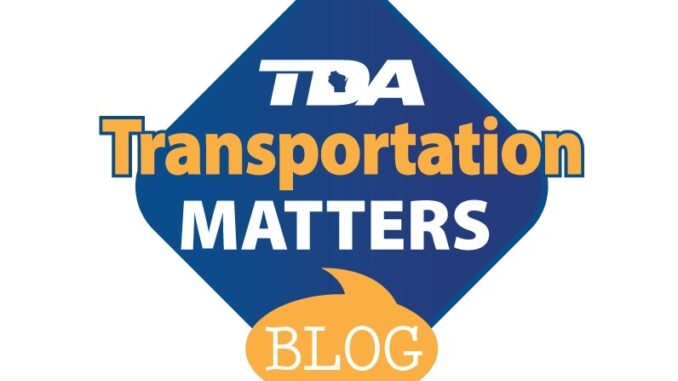
There was big news out of Washington just before the holidays. The enactment of the Infrastructure Investment and Jobs Acts, also known as the Bipartisan Infrastructure Law, has the transportation community and policymakers abuzz. This legislation has been heralded as the largest increase in federal highway and public transit investment in more than 50 years, a once-in-a-generation investment.
The measure is, at its core, a five-year surface transportation reauthorization, providing significant new money for roads, bridges, and public transportation. It also includes rail, port, and airport investment, along with funds for other non-transportation infrastructure.
Headlines last fall trumpeted the more than $5 billion for Wisconsin’s road and bridges. While true, the media coverage was often incomplete, failing to mention the $4 billion Wisconsin would have received under existing law. But still, an additional $1.1 billion over five years — approximately $200 million a year, plus $45 million annually specifically for bridges — is real money. Wisconsin will also benefit from roughly $30 million more a year in federal transit funding.
So, what would you do with this extra money?
Wisconsin could improve state highway conditions, help local governments address their backlog of needed repairs and investments, focus on providing mobility options, rebuild 60-year-old-plus Interstate sections, target roadways with high accident rates, prioritize bike path and pedestrian facility connections, concentrate on replacing bridges hampering the movement of goods, or something else.
The above list highlights the possibilities provided by the infusion of new federal dollars and the challenge. This additional money will allow Wisconsin to make headway toward some key objectives. However, it alone will not address all our transportation network’s pressing needs.
After Congress completes work on the fiscal year 2022 appropriations, hopefully early this year, the Wisconsin Department of Transportation will have to submit a plan for approval to our legislature’s Joint Finance Committee. In this document, the department will detail how it proposes to spend the boost in federal funds through the end of the current state budget. WisDOT will need to balance its priorities with pragmatic considerations — what projects are ready to go. This task will be tough, and the only sure thing is no one will get everything he or she wants. But in this case, we all win.
Everyone loves the grand gesture — think John Cusack holding up the boombox outside his love interest’s window in the movie Say Anything — but it is the efforts we make over time that ultimately get us where we need to go. If we think of this money as a windfall or in superlative terms, then it is likely “one and done.” Instead, let’s look at this increased funding as the essential next step that builds on some recent progress at the state level.
We need to make the most of this opportunity. We must show the value of efficient and impactful investment to communities across the state on our path to move beyond merely slowing the decline of transportation conditions to actually improving the overall system.
Because as we all know, things in motion tend to stay in motion.
